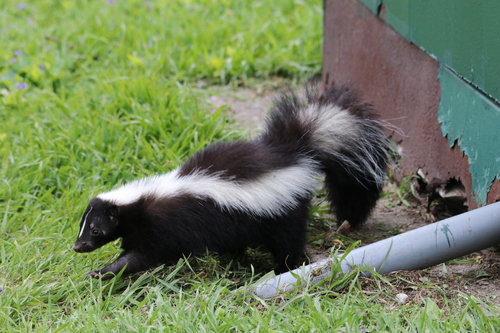
Striped Skunk
The striped skunk, Mephitis mephitis, is famed for its bold black and white stripes and powerful defensive spray. These nocturnal creatures play a critical role as pest controllers across diverse habitats, from peaceful woodlands to bustling urban zones.
2-3 years
Lifespan
Least Concern
Conservation Status
Stable
Population Trend
Distribution Range of the Striped Skunk
Mephitis mephitis, commonly known as the striped skunk, is native to North America. Its geographical distribution covers a vast area from Canada to Mexico, including the United States. Specifically, it is found in Canadian provinces such as British Columbia, Manitoba, and Ontario, throughout the contiguous United States, and into northern regions of Mexico.
Striped Skunk's Habitat
Environmental Conditions
The striped skunk typically inhabits a variety of environments including mixed woodlands, grasslands, agricultural areas, and urban areas. They prefer regions that provide ample cover and access to food sources. The climate in these areas can be temperate to continental, with variations ranging from cold winters in the northern regions to milder winters in the southern parts of their distribution.
Ecological Niche
Striped skunks are omnivorous foragers, primarily feeding on insects, small mammals, fruits, and vegetation. They have adapted to thrive in diverse environments, often benefiting from their ability to coexist near human settlements where they can find food easily. The skunk's well-known defensive behavior, characterized by its ability to spray a noxious liquid, helps it to deter predators, making it a successful adaptor in various ecological niches.
Copyright @ Nature Style Limited. All Rights Reserved.
 English
English